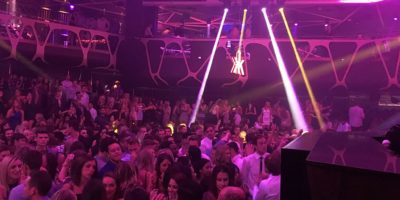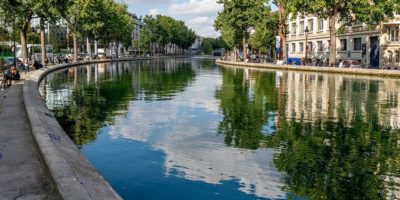The History of Prague’s Vltava River
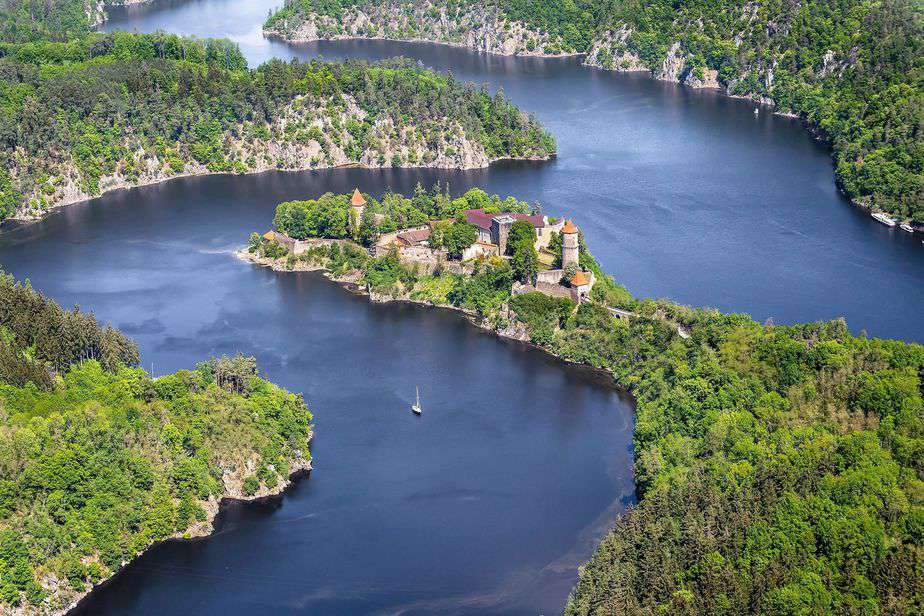
Vltava and the Zvikov Castle – by Tomas Vocelka – Magazine Aktualne
Every time I think of Prague, Vltava is a natural part of the picture in my head. Its curves that shaped the city we know today, the bridges across, the boats going back and forth and the paddle boats you can rent during the summer to see the city from a different perspective.
But what is the history of the river? Was it always that people imagined the river when thinking of Prague? And how important was the river in people’s lives in the past centuries. Let’s go back and have a look at the brief history of the river. Let’s also have a look at a water activity that is so popular among the Czechs it might surprise you.
Quick Facts about Vltava
Do you ask yourself what is the meaning of Vltava? The word Vltava has no meaning in Czech language. The origin of the name dates back to the times when the Celts resided in Bohemian territory. And we know that the Old Germanic tribes that came after used the same word – Wilt-ahwa – the wild water. And from there, the transformation to Vltava eventually happened. If you are interested in the history of the Celts in Bohemia, visit an exhibition about them at the National Museum in Prague.
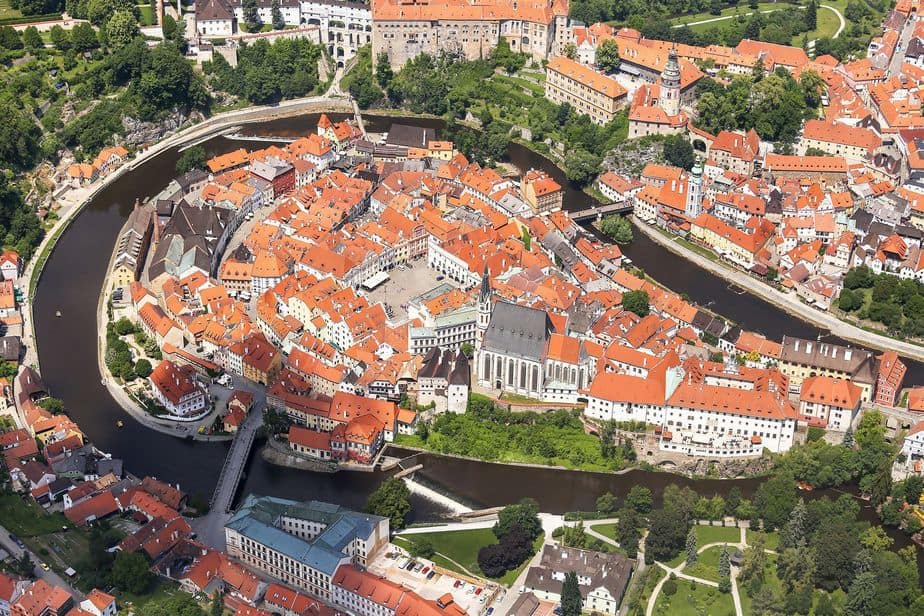
Taková je Vltava z výšky – by Tomas Vocelka – Magazine Aktualne
Vltava River or simply Vltava is a confluence of the so-called Warm and Cold Vltava. It springs in the Šumava Mountains on the east side of the Black Mountain (Černá Hora). It then passes through the southern Bohemia and turns north. Follow the river and you will see the Rožmberk castle and several cities.
Worth mentioning is the UNESCO protected Český Krumlov, and then České Budějovice and Hluboká nad Vltavou. Hluboká nad Vltavou is a home of one of the most beautiful palaces in the Czech Republic.
Worth mentioning is another place on the way – Palace Orlík and the Orlík Reservoir. Orlík Reservoir gained its “fame” for the so called Orlík Murders in the early 90’s. And then finally, Vltava reaches Prague and continues north again to join Labe (or Elbe) River and eventually the North Sea.
Vltava is the longest river of the Czech Republic (430.2 km) and drains an area of about one third of the entire country. Its surroundings are so picturesque that they attracted many people who until today enjoy its beauty and the nature around from the rafts.
Vltava used to be used primarily for log rafting
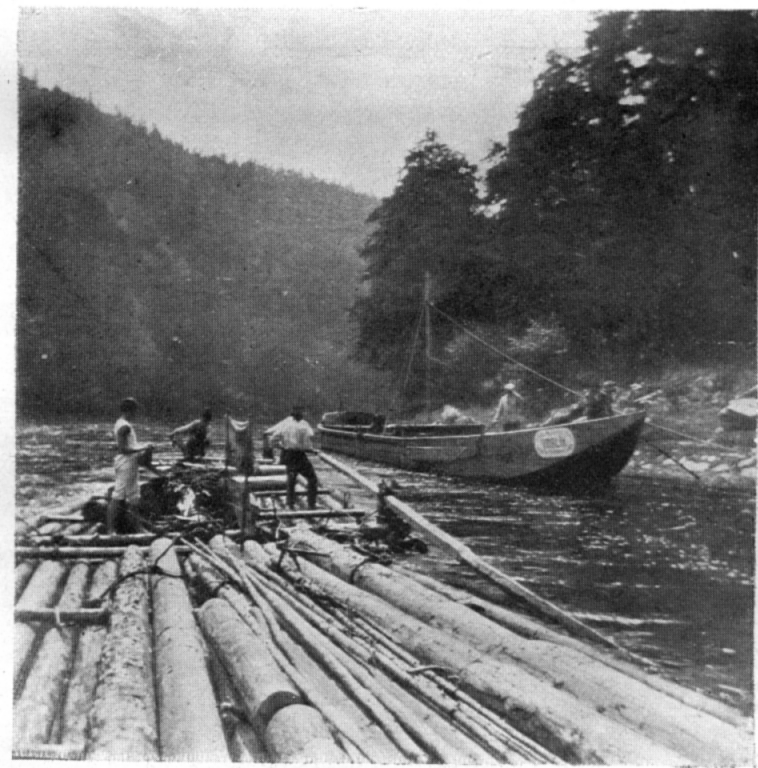
Log Rafting in Bohemia, image sourced from Wikipedia
The highest importance of Vltava during the medieval times was the log rafting. The wood was necessary for the towns and castles’ constructions. The source of wood was in the South and South-West of the Bohemian territory and the river was the fastest way to deliver the wood.
During the 16th century, the river was also important for the transportation of salt. The workers originally put salt into barrels and loaded it on the ship decks. That was not very efficient and quite problematic because once in Prague, there was no use for the empty ships. And so, the horses transported the ships back to the South. As you can imagine, that took a very long time. For that reason, the rafts came back into picture. Truly, from that point, Prague received its salt on the rafts.

St. John’s Rapids by Miroslav Jankuj
For centuries the log rafters had to navigate down a very difficult area – the St. John’s Rapids. Even though the area was beautiful to sail through with cliffs and rocks around, the river formed very dangerous rapids. And so, in the 17th century, the Emperor Ferdinand III issued a mandate that ordered river adjustments for safer log rafting.
Vltava attracted attention of many businessman in the following centuries who worked on accommodating the river for business opportunities, such as to connect Vltava with Danube River. This was however never perceived as a priority and never completed. Later, the river started to be thought of as a source of energy and indeed Vltava is now the source for the nuclear plant Temelín.
Vltava’s tourism is booming
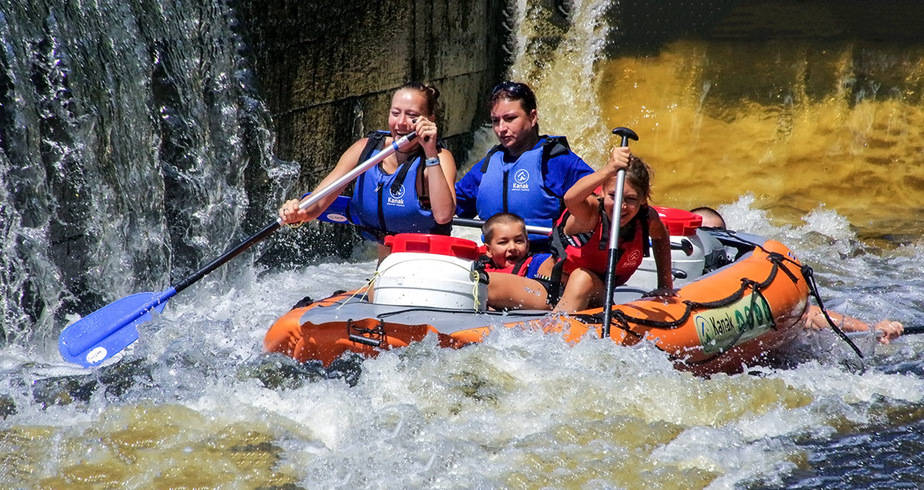
Vltava for rafters – Penzion U Ševců
The history of log rafting and the constant traffic between the South and Prague gave a good basis for today’s popular water tourism. Those of you who don’t mind getting wet, consider spending a few days in the summer on the rafts. It’s a lot of fun especially when you take your friends and family along.
The most popular route is to start in Vyšší Brod, where you can rent a raft, load your stuff, including a tent and some sleeping bags into the barrels and start your trip towards the UNESCO protected city Český Krumlov.
The trip is 35km long and will take you between 8-10 hours. It’s up to you to either sail it in one day or take it easy and spend a night in one of the camps along the river. After spending the night in Český Krumlov, you might continue to Boršov nad Vltavou.
You will be rafting along the forests, fields, cliffs and castles. You will also meet a lot of fellow rafters on the way, so don’t forget the famous greeting Ahoy. This word was such a common greeting that until today Ahoj means hi in Czech language.
Vltava earns a new place in the Czech hearts

Farmer’s Market on Náplavka, image sourced from Prague.eu
When you walk along Vltava in Prague today, you can enjoy the walk filled with views, trees, the panorama of the Prague Castle and swans on the river surface. Both sides of the river are especially busy during the summer. People can enjoy themselves during the beer and wine festivals or farmer’s markets that take place every Saturday on Náplavka.
But, did the river banks always look like that? Were the river banks and the river itself always a place where people liked to stroll and sat to breath in the city atmosphere? Let’s have a look!
For the longest time, Vltava had a conflicting place in people’s minds. The river was important for the transportation but a barrier for pedestrians (for centuries, the Charles Bridges was the only bridge crossing the river – you can read more about the Charles Bridge here).
Vltava was also a source of drinking water but there were places where the river was also the ending point of the sewers. There, the river looked more like a ditch than a place one would like to stroll by. The river was also a power for the log rafts and ships but a threat when the floods came.
The river banks were the city peripheries. While walking on the river banks back then, you would have found mills and noisy crafts that often left their masters untidy. You would have seen warehouses and quarters inhabited by the poorer population. You would have run into brothels, hospitals and orphanages.
Rapid turn and the landscape change started in the mid-19th century with the city development. More bridges were built, the banks were given new, friendlier looks. All of a sudden, the river banks were desired places to live and people started to fill the river areas, strolling along and enjoying the views. Many buildings and entire neighbours were destroyed during the development phase and new, fancy blocks of flats were built replacing the poorer neighbourhoods.
The river is no longer a barrier for pedestrians. Can you guess how many bridges cross the river? There are 18 of them, including those for pedestrians, public transit and motor vehicles. Vltava covers 31km within the city and until 1912 we used Vltava as a source of drinking water. Until today, Vltava serves as a back-up source of water in case of an emergency or repairs.
So, next time you walk along the Vltava river and breathe in the air, imagine the times when the wood was floating on it, people were rushing around to pull the wood and barrels filled with salt on the bank. Can you see it?
Planning a trip to Paris ? Get ready !
These are Amazon’s best-selling travel products that you may need for coming to Paris.
Bookstore
- The best travel book : Rick Steves – Paris 2023 – Learn more here
- Fodor’s Paris 2024 – Learn more here
Travel Gear
- Venture Pal Lightweight Backpack – Learn more here
- Samsonite Winfield 2 28″ Luggage – Learn more here
- Swig Savvy’s Stainless Steel Insulated Water Bottle – Learn more here
Check Amazon’s best-seller list for the most popular travel accessories. We sometimes read this list just to find out what new travel products people are buying.



